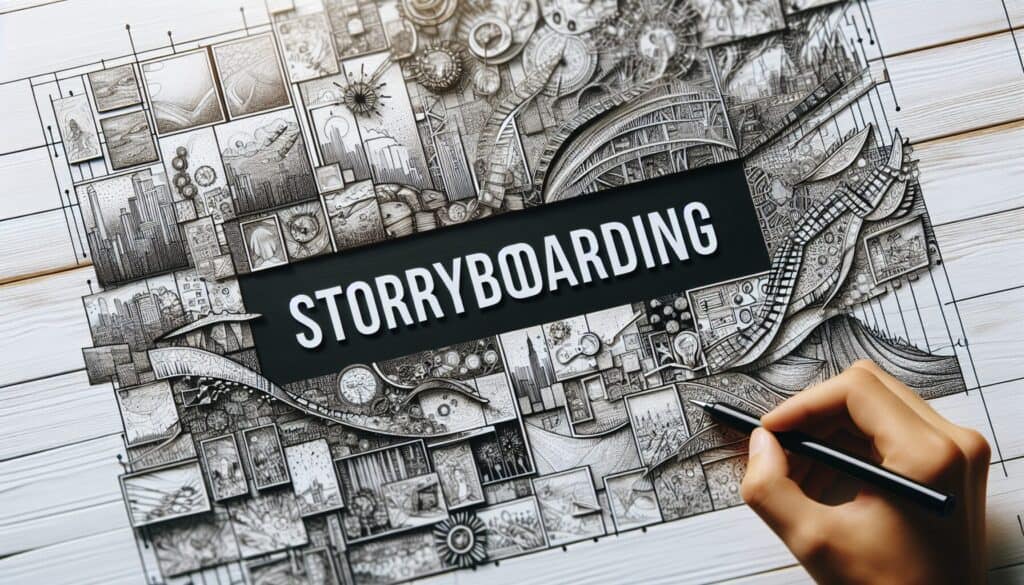A visual technique used to outline a sequence of eventi, user interactions, or a narrative, typically using a series of drawings, sketches, or images arranged in chronological order.
- Metodologie: Ergonomia
Storyboarding

Storyboarding
- Processo di progettazione, Pensiero progettuale, Design dell'interazione, Storyboarding, Esperienza utente (UX), Interfaccia utente (UI), Test dell'utente, Progettazione incentrata sull'utente, Design visivo
Obiettivo:
Come si usa:
- Key moments or steps in a process, user journey, or story are depicted visually, often with brief captions describing what is happening, what the user is thinking, or dialogue. It helps to visualize the flow and context.
Professionisti
- Helps to visualize and communicate ideas, user experiences, or process flows effectively; Facilitates understanding and discussion among team members and stakeholders; Allows for early identification of potential issues or gaps in a narrative or interaction.
Contro
- Can be time-consuming to create detailed storyboards; Effectiveness can depend on the artistic skill of the creator (though simple sketches are often sufficient); May oversimplify complex interactions if not enough detail is included.
Categorie:
- Clienti e marketing, Ideazione, Progettazione del prodotto, Gestione del progetto
Ideale per:
- Visualizing user experiences, explaining complex processes, planning video or animation sequences, and communicating design ideas.
Storyboarding is widely utilized in various industries such as film, animation, software design, and user experience research, where the key moments in a process or series of interactions need to be articulated visually. In product design, teams often employ storyboarding during the ideation phase to convey user scenarios, which facilitates brainstorming sessions and fosters collaboration among cross-functional teams. For example, a software company may create storyboards to outline a user’s experience while interacting with a new app feature, detailing each step visually and including captions that describe user intentions and emotions. This method is particularly effective in identifying potential pain points or misalignments in expectations early in the design process, allowing teams to iterate on ideas before development begins. Stakeholders, including UX designers, product managers, and engineers, typically participate in the creation of these storyboards, enabling diverse viewpoints and richer contextual understanding. Moreover, storyboarding serves as a valuable communication tool that simplifies presentations and dialogues with clients or other stakeholders who may not be familiar with technical jargon, thus advancing alignment and buy-in across various groups. In the context of training materials or marketing videos, storyboards aid in defining the visual narrative, ensuring that the final product aligns with the strategic vision and user needs.
Fasi chiave di questa metodologia
- Identify the main user scenario or narrative.
- Break down the user experience into a sequence of key moments or actions.
- Create visual sketches for each identified moment.
- Add brief captions to describe the action, thoughts, or dialogue.
- Organize the visuals in a logical flow to depict progression.
- Review and iterate to ensure clarity and alignment with objectives.
- Share the storyboard with stakeholders for feedback.
- Incorporate feedback and refine the storyboard as necessary.
- Finalize the storyboard for presentation or further development.
Suggerimenti per i professionisti
- Integrate user feedback loops into storyboarding to refine narrative accuracy and ensure alignment with user expectations.
- Use a mix of hand-drawn elements and digital techniques to capture spontaneity and clarity, facilitating a richer visual dialogue.
- Create multiple iterations of storyboards to explore alternate scenarios and outcomes, allowing for adaptability and innovation in design narratives.
Leggere e confrontare diverse metodologie, raccomandiamo il
> Ampio archivio di metodologie <
insieme ad altre 400 metodologie.
I vostri commenti su questa metodologia o ulteriori informazioni sono benvenuti su sezione commenti qui sotto ↓ , così come tutte le idee o i link relativi all'ingegneria.
Contesto storico
1949
1950
1950
1960
1960
1960
1960
1940
1950
1950
1958
1960
1960
1960
1960
(se la data non è nota o non è rilevante, ad esempio "meccanica dei fluidi", viene fornita una stima approssimativa della sua notevole comparsa)















Post correlati
Calcolatore da METS a calorie
Meta-analisi
Mappatura dei messaggi
Diagrammi del modello mentale
Forze di spinta e di trazione massime accettabili
Pianificazione dei fabbisogni di materiale (MRP)